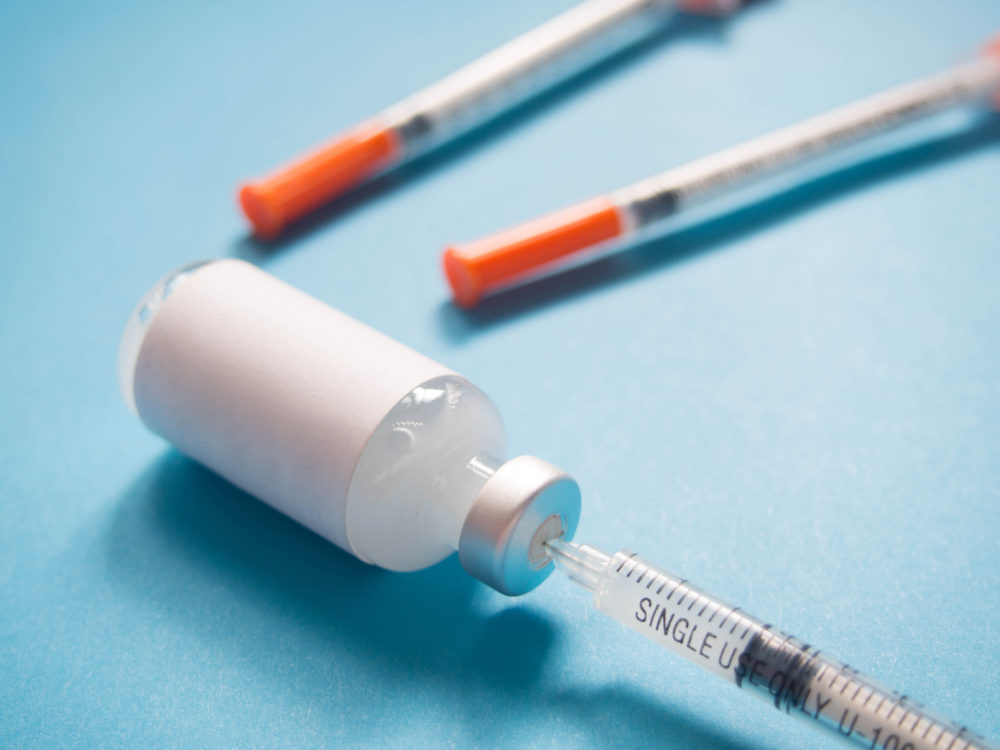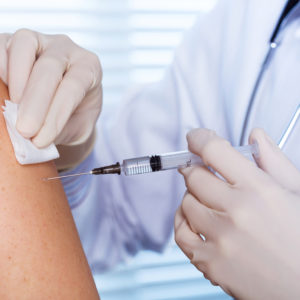Shingrix Guillain-Barré Syndrome Risk Seen During 42 Days After Shingles Vaccination: Study
Researchers say the risk-benefit profile of Shingrix still favors it being used as a shingles vaccine.

A recently published study does warn that side effects of the Shingrix shingles vaccine does increase the risk of Guillain-Barré Syndrome, potentially causing users to experience severe muscle weakness and paralysis. However, researchers indicate that the slight risk does not outweigh the benefits of vaccination against shingles.
Approximately three additional Guillain-Barré cases may develop during the 42 days after receiving the shingles vaccine, out of every million people who receive a Shingrix injection, according to data published this month in the JAMA Internal Medicine
Researchers with the U.S. Food and Drug Administration (FDA) and the U.S. Centers for Disease Control and Prevention (CDC) sought to assess the Guillain-Barré risk with Shingrix, also known as the recombinant zoster vaccine, using data from Medicare claims involving individuals 65 years or older.
Shingrix was introduced by GlaxoSmithKline in October 2017, as the second vaccine approved in the U.S. for prevention of shingles among adults, involving two doses for inoculation. It has largely replaced the earlier shingles vaccine approved by the FDA in 2006, Zostavax, which involved the use of a live virus that has been linked to reports of severe shingles outbreaks and auto-immune problems.
Although Shingrix has been marketed as a safer alternative, side effects have been linked to reports of injection site reactions and other less severe problems.

Learn More About
Side effects of the shingles vaccine Zostavax may result in the development of a painful and persistent strain of shingles
Learn More About this Lawsuit SEE IF YOU QUALIFY FOR COMPENSATIONThis latest study involved a cohort study involving data from Medicare enrollment and claims databases which included 1.3 million Shingrix vaccine recipients, and 1.8 million who received the Zostavax vaccine, with a mean age of about 74 years old.
According to the findings, those who received the Shingrix vaccine appeared to have more than twice the risk of developing Guillain-Barre Syndrome than those who received a Zostavax injection. This resulted in about three cases out of every one million doses given, which developed within a 42-day period after vaccination.
The preliminary data from this study led to a drug safety communication by the FDA in March, announcing it would be adding new label warnings about the potential link between Shingrix and Guillain-Barre Syndrome.
The FDA said that while the data shows an association, it does not prove a causal effect, and has determined the benefits of the vaccine still outweigh the risks.
“Clinicians and patients should be aware of this risk, while considering the benefit of decreasing the risk of herpes zoster and its complications through an efficacious vaccine, as risk-benefit balance remains in favor of vaccination,” the researchers concluded.
While the maker of Zostavax currently faces hundreds of shingles vaccine lawsuits filed in recent years, each involving allegations that Merck failed to adequately warn users about the potential side effects, the Shingrix manufacturer GlaxoSmithKline has not been part of the litigation. However, it appears that recipients diagnosed with Guillain-Barre Syndrome may have a basis to file Shingrix lawsuits, if the drug maker knew or should have known about the risk earlier.
Get more articles like this sent directly to your inbox.
"*" indicates required fields






0 Comments